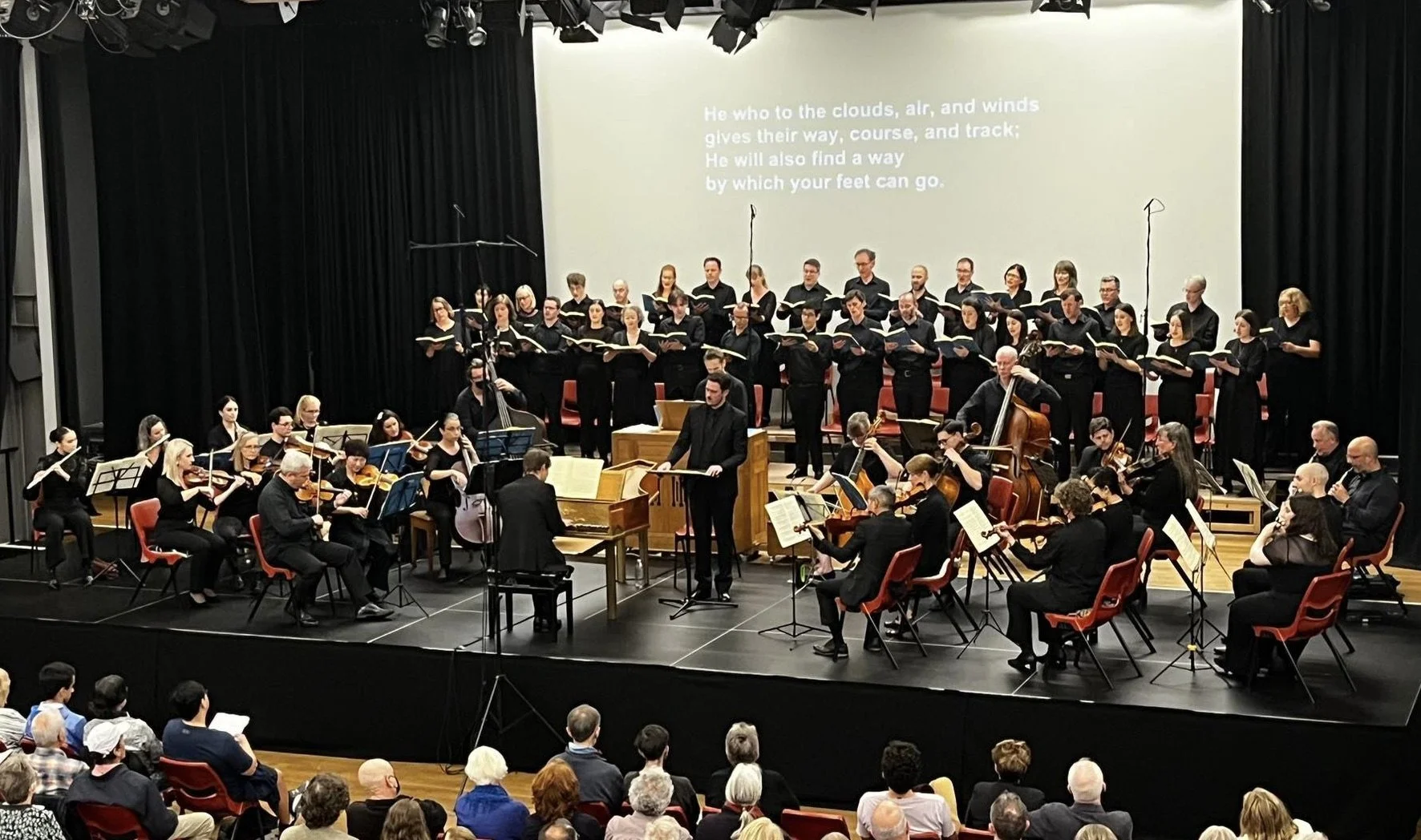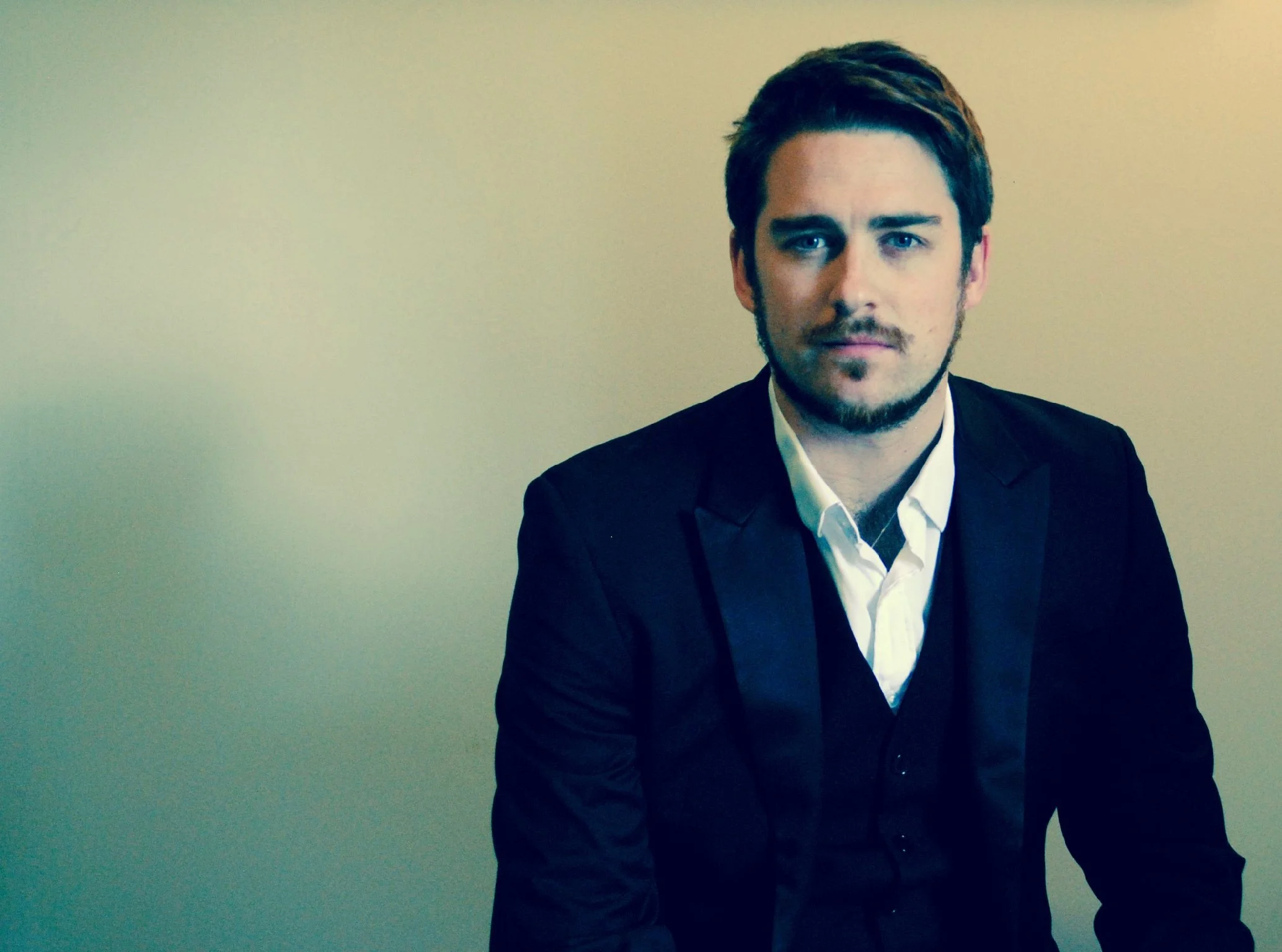J S Bach’s St Matthew Passion: monumental and humane
The recent Wellington concert performance of J S Bach’s St Matthew Passion by the Tudor Consort with the Chiesa Ensemble, under the direction of Michael Stewart, thrilled a large audience with its vivid communication of both the drama of the theatrical composition and the timeless genius of Bach’s musical story-telling.
Bach’s St Matthew Passion is rightly considered one of the greatest masterpieces of western music. A monumental composition, some three hours in length, requiring two orchestras and three choruses as well as vocal and instrumental soloists, it was composed by Bach in Leipzig for performance at the Thomaskirche (St Thomas’s Church) for Good Friday Vespers, first in 1727 and again in 1729, the latter date often quoted as the premiere.
After Bach’s death in 1750, the work and its composer fell into obscurity. It was after Felix and Fanny Mendelssohn sang in a performance of the Passion in Berlin in the 1820’s that a successful modern performance was mounted in Berlin at Easter, 1829. So began Mendelssohn’s famous revival of interest in all of Bach’s music that eventually afforded his oeuvre the reverence we feel today.
Composer Johann Sebastian Bach (1685-1750)
…genius and humanity.
The Passion’s construction is theatrical and complex, its two Parts divided into Acts and Scenes with some 68 sections in total, alternating solo recitatives and arias with choruses and chorales. It tells the Easter story from the Gospel According to St Matthew, the events of Christ’s last days, His crucifixion and burial. (‘Passion’ is derived from the Latin ‘patior’, meaning ‘to suffer’ or ‘endure’.) Antiphonal choirs (no doubt influenced by the design of the Thomaskirchen) play multiple roles. The performance was in German, with English translations projected.
The traditional chorales throughout the complex edifice, melodies which would have been well-known to the congregation of St Thomas’s, were harmonized by Bach himself. The choral singing of these was uniformly lovely, sometimes soothing and peaceful, sometimes full-voiced and passionate. The Tudor Consort is not a big choir, but its fine singers produce a big sound when required, harmonies well-balanced with great clarity of diction. Many changes of character are required of them in the chorales and choruses, from hostile mob, for instance, demanding “Let him be crucified!” to the mellifluous chorale that follows.
Tenor Lachlan Craig as the Evangelist
…authority and an extrovert tone
The hugely demanding role of the Evangelist, a narrator who sings the biblical text holding the threads together, was sung by tenor Lachlan Craig with authority, a nicely extrovert tone and the necessary vocal stamina. The urgency and character of his singing grew as the drama built, reaching a climax in the ‘Earthquake and Revelation’ section of Act 5, the Act of the Sepulchre. The other major solo role of Christus was taken by Simon Christie, his fine bass voice enhanced by an energetic sense of theatre.
The strongest evidence in the work of Bach’s profound humanity is in his settings of the colourful language of the libretto by Christian Friedrich Henrici (known as ‘Picander’). This is a very human story and through these individual characters, and their moving singing of recitatives and beautiful da capo arias, we share in their dilemmas, grief and love.
As in Bach’s time, soloists were drawn from the choirs, further testimony to the vocal strength of the Tudor Consort. There were many highlights, the first from mezzo soprano Maaike Christie-Beekman singing the alto aria ‘Büß und Reu’ (Repentance and Regret), with two flutes in sinuous and lovely accompaniment. Christie-Beekman’s rich voice and clear diction delighted in several other solos during the evening. Sopranos Nicola Holt and Phoebe Sparrow both impressed with lovely tone and musicianship, Holt’s aria ‘Ich will dir mein Herze schenken’ (I will give my heart to you) taken at a brisk pace with nice ornamentation in the da capo. Alto Eleanor McGechie gave a fine and touching performance of the long aria ‘Können Tränen meiner Wangen’ (If the tears upon my cheek), the accompaniment perhaps a little heavy-footed. Tenor John Beaglehole’s aria ‘Geduld, geduld!’ (Patience, patience!) was not vocally flawless but his fine sense of character prevailed. Bass Isaac Stone was impressively confident and vocally strong in the role of Pilate and Joshua Jamieson relaxed and emotionally moving as Peter.
Tudor Consort’s Music Director Michael Stewart
..directed from the harpsichord with thoughtful musicianship
There were numerous examples throughout of Music Director Michael Stewart’s thoughtful musicianship. His subtle approach to the numerous chorales was one. Bach repeated, for instance, the well-known melody ‘O Haupt Voll Blut Und Wunden’ (O Sacred Head Sore Wounded) no fewer than five times in the Passion with different verses and harmonisations and Stewart carefully varied both the dynamics and breathing of the choirs to emphasise the different texts.
A major role in the drama is played by two orchestras, formed here from the Chiesa Ensemble (mostly NZSO players) led by Vesa-Matti Leppänen, and facing each other from opposite sides of the stage. Many arias are accompanied by extended and expressive instrumental solo lines. A highlight was Leppänen’s beautifully sensitive playing in the heart-breaking aria ‘Erbarme dich, mein Gott’ (Have mercy, my God), a lilting 12/8 duet for alto and violin reflecting Peter’s regret after thrice denying Jesus. Another was the virtuosic playing by Imogen Granwal on viola da gamba, accompanying Pilate’s aria ‘Komm, susses kreuz’ (Come, sweet cross) in Act 4. The woodwinds in the ensembles shone throughout, Bach making expressive use of flutes and oboes in several arias.
The continuo group of Eleanor Carter (cellist), Tom Chatterton (organ) and Granwal, with Stewart’s harpsichord, dealt with the massive requirements of their role with unobtrusive musicianship and unflagging aplomb. All instrumentalists were using modern instruments and therefore modern tunings but there was throughout the performance a good awareness of historical traditions and conventions.
An excerpt from the manuscript of Bach’s St Matthew Passion
…a complex edifice
As Bach would have done, Stewart directed his diverse forces from the harpsichord, his approach both understated and highly effective, managing entries, transitions, fermata and tempo variations with subtle movements, a finger or hand, incline of head or facial expression. His management of the treble choir of fine young choristers from Wellington’s Cathedral of St Paul, placed some distance from him on the mezzanine level, was both expert and empathetic. Leppänen, an experienced director of Baroque ensembles, also played a leadership role with the instrumentalists, maintaining momentum within complex textures. The ensemble work throughout was remarkably consistent, with only tiny moments when the forces were less than cohesive.
The performance took place in the Allan Gibbs Centre at Wellington College. As a venue it is charmless and poorly ventilated with uncomfortable seats, and these conditions contributed nothing to anyone’s enjoyment of what was, otherwise, a compelling performance. The acoustics of an auditorium, built as “multi-purpose”, were surprisingly more responsive than expected, though bright neon lights glaring unceasingly on performers and audience did not enhance the atmosphere. A church or cathedral would of course have been better, but Wellington does not have one that combines suitable acoustics for Bach’s dense counterpoint with sufficient facilities and parking for a good-sized audience. How we miss the old Wellington Town Hall, now scheduled to open in 2025.
And so, after three hours, tired but still raptly attentive, we arrived at the final glorious double chorus of the St Matthew Passion, ‘Wir Setzen Uns Mit Tränen Nieder’ (In Tears of Grief). Beginning with and circling back to a magnificent C minor chord, it offers a deeply emotional sense of resolution after the affecting roller-coaster of this extraordinary work. Perhaps we need a performance of this Passion before Easter each year, much as we enjoy Handel’s Messiah as an annual tradition. The Tudor Consort has certainly proved itself up to this towering Baroque masterwork.
J S Bach’s St Matthew Passion The Tudor Consort with the Chiesa Ensemble and Choristers of Wellington Cathedral of St Paul, directed by Michael Stewart. Lachlan Craig (Evangelist), Simon Christie (Christus). Wellington, 25 March 2023





